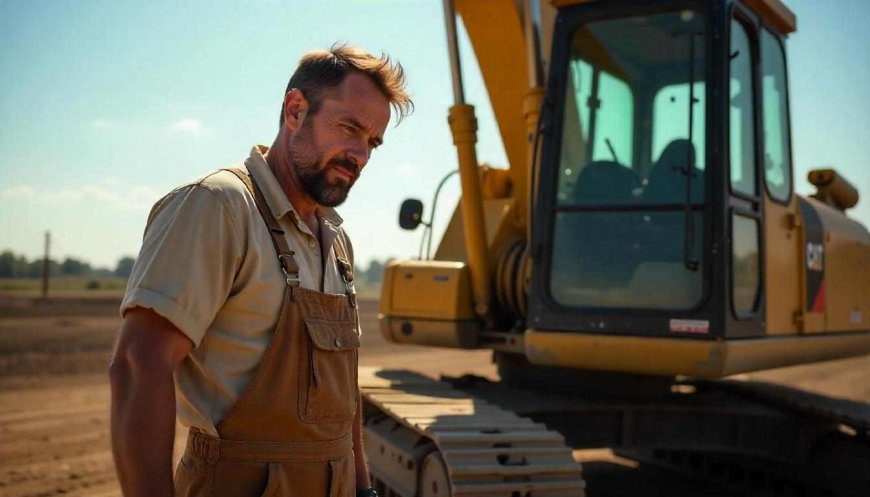How Does Equipment Guider Enhance Safety Awareness Among Heavy Equipment Professionals?
Learn how Equipment Guider promotes heavy equipment safety through real-world stories, practical tips, and up-to-date training that helps professionals work smarter and stay safe.

Heavy equipment safety is not negotiable. A lapse in safety protocols can have tragic consequences, from property damage to life-threatening injuries. In todays rapidly changing industry, where new technologies and complex machinery constantly reshape the work environment, maintaining high safety standards is more important than ever. Thats why educational resources like Equipment Guider are so valuable. By combining technical instruction with practical, real-world advice, Equipment Guider empowers mechanics, operators, and fleet managers to elevate their safety awareness and develop a culture where safety is part of every job.
Why Safety Can Slip Through the Cracks
Despite clear rules and best practices, safety failures still happen on job sites and in workshops. Often, these failures result from human factors stress, fatigue, or even simple lack of knowledge. Other times, the fast-paced demands of the job cause workers to cut corners.
In heavy equipment repair and operation, the stakes are particularly high. Machines can weigh tens of thousands of pounds, hydraulic pressures can exceed 3,000 psi, and electrical systems can deliver lethal shocks. When you combine these hazards with a rushed repair or a missed inspection, the outcome can be devastating.
Thats why continuous, relatable safety education is crucial and exactly why Equipment Guider provides such an important service.
Breaking Down Complex Safety Concepts
One of the reasons safety rules get ignored is because they seem complicated or disconnected from daily work. Reading through a dense OSHA document or manufacturers manual can feel overwhelming, especially if youre trying to get a machine back into service quickly.
The equipment guide addresses this gap by explaining safety protocols in language that feels approachable and real. For example, when discussing hydraulic repairs, the blog doesnt just repeat relieve system pressure as a bullet point. Instead, it describes in detail why residual pressure is dangerous, how it behaves, and what actually happens if you open a line too soon.
By telling the story behind the rule, the lesson sticks because readers see the real-life consequences of ignoring it.
Sharing Personal Experiences
People learn best through stories. Equipment Guider excels at sharing firsthand experiences of close calls, near-misses, and lessons learned the hard way. These stories resonate deeply with readers because they mirror the unpredictable reality of working on heavy equipment.
When you read about a technician almost crushed by a sudden boom movement or a mechanic narrowly escaping a high-pressure hydraulic spray, you remember it. Those stories become mental anchors, reminding workers to double-check lockout/tagout or verify proper cribbing.
In this way, Equipment Guider acts almost like a virtual mentor, passing down valuable war stories that teach safety far better than any dry manual.
Building Risk Awareness
Many safety incidents happen because workers become complacent. They do a task the same way a hundred times without an accident, and then one day something goes wrong.
The equipment guide combats complacency by repeatedly highlighting the risks behind seemingly simple tasks. Articles explore what can go wrong during a routine lift, why a leaking hose can turn into a catastrophic failure, or how improper PPE can turn a minor shock into a life-altering injury.
By emphasizing risk awareness, the blog helps mechanics and operators stay vigilant and avoid letting familiarity breed dangerous shortcuts.
Encouraging a Safety-First Culture
Beyond personal knowledge, safety culture depends on shared attitudes. When a team buys into safety together, it is far easier to enforce good habits and hold each other accountable.
The equipment guide fosters this culture by encouraging readers to discuss safety with their coworkers and supervisors. By offering content thats easy to share and discuss such as a walkthrough of a safe hydraulic rebuild the platform gives teams a reason to talk about safety, not just check boxes on a compliance form.
Fleet managers can even use these articles in toolbox meetings or refresher courses, making safety conversations more engaging and less of a chore.
Integrating Safety with Technical Skills
One of the most powerful aspects of Equipment Guider is how it combines technical skill-building with safety. Too often, safety is taught in isolation, with little connection to the repair or maintenance tasks mechanics perform daily.
Instead, Equipment Guider blends the two seamlessly. An article about replacing a cylinder pin doesnt just explain the pin size and torque spec it also discusses safe lifting techniques, cribbing procedures, and how to spot a cracked weld that could lead to equipment collapse.
This practical integration makes safety feel like a natural part of doing the job properly, not a separate hurdle to clear.
Staying Up to Date
Safety is not static. As equipment evolves, so do safety requirements. New emissions systems, for example, introduce hot surfaces and chemicals that mechanics might not have encountered before. High-voltage hybrid systems in modern machinery also present fresh hazards.
Equipment Guide helps professionals keep pace with these changes by regularly updating its content with the latest safety practices and technologies. When a technician understands the risks tied to emerging systems, they can adapt their habits before an incident occurs.
Conclusion
Safety should never be an afterthought in heavy equipment work. With real-world storytelling, practical examples, and a commitment to integrating safety directly into technical training, Equipment Guider provides a powerful, relatable resource that elevates safety awareness industry-wide.
By making safety approachable and connected to daily practices, Equipment Guider helps build a culture where everyone goes home at the end of the day healthy, whole, and ready to take on tomorrows challenges with confidence.








































